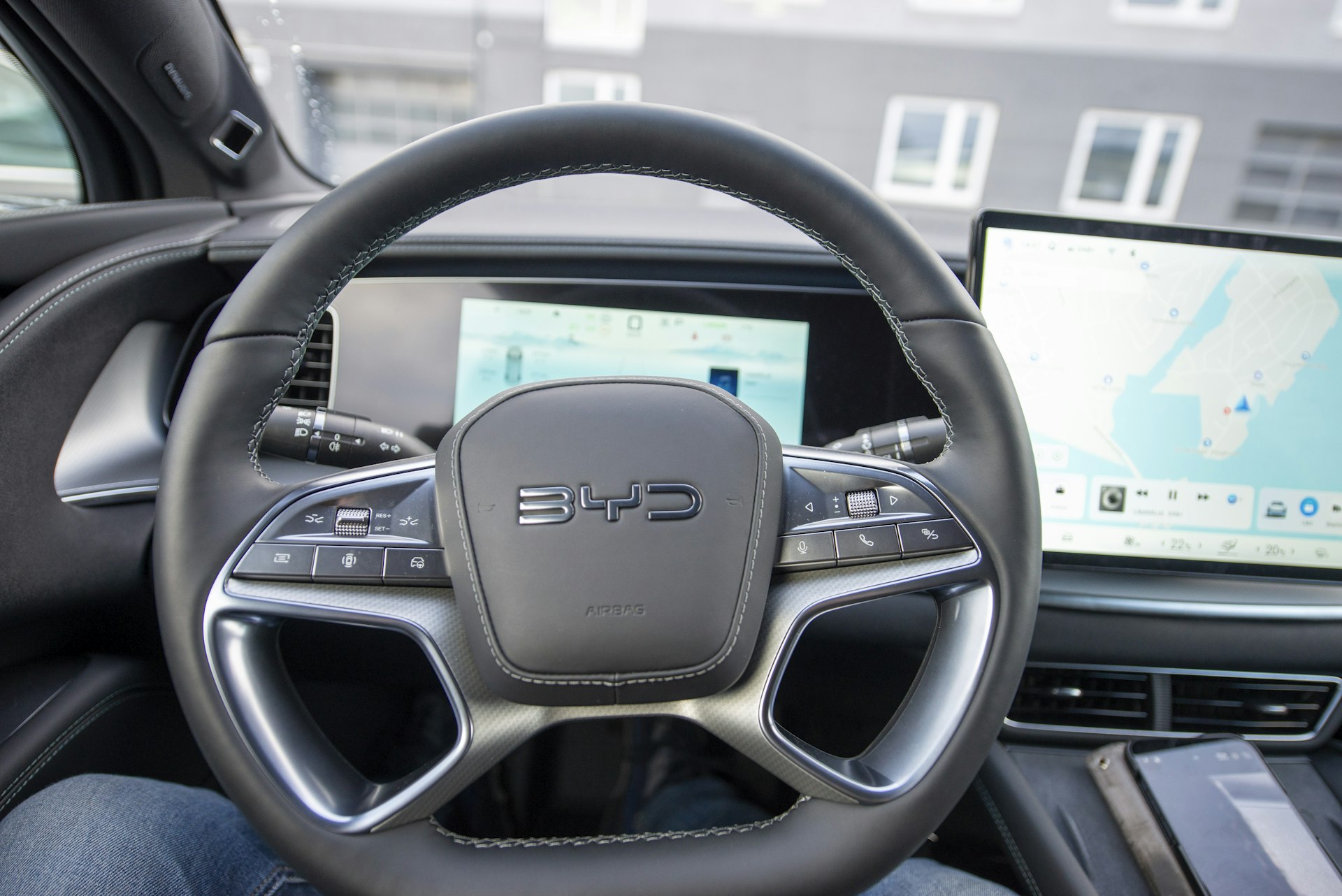The Evolving Landscape of Voice-Controlled In-Car Assistants: Trends, Challenges, and Practical Guidance

Photo by D Z on Unsplash
Introduction: The Rapid Rise of Voice-Controlled In-Car Assistants
Voice-controlled in-car assistants have evolved from basic command systems to sophisticated, AI-powered copilots. Today’s solutions not only help drivers keep their hands on the wheel and eyes on the road but also deliver personalized, real-time assistance for navigation, entertainment, safety, and vehicle management. This article explores the trends shaping the future of these technologies, the challenges they face, and how you can access and maximize their benefits.
The Growth of Voice Assistant Technology in Vehicles
Over the past decade, the automotive industry has witnessed a dramatic increase in the adoption of voice assistant technology. According to market research, the global in-car voice assistant market was valued at $3.27 billion in 2025 and is projected to reach $5.49 billion by 2029, boasting a compound annual growth rate (CAGR) of 13.9% [3] . Industry estimates suggest that over 150 million vehicles are already equipped with some form of voice assistant technology [4] . This growth is fueled by rising consumer demand for safer, more connected, and more intuitive driving experiences.
Key Trends Shaping Voice-Controlled In-Car Assistants
1. Integration with Advanced Driver Assistance Systems (ADAS) and Autonomous Features
Modern vehicles are increasingly equipped with advanced driver-assistance systems. Voice control is emerging as a critical interface for interacting with these features. For example, drivers can adjust adaptive cruise control settings or receive safety alerts through natural language commands [1] . As autonomous features advance, the role of voice assistants is set to expand from simple controls to managing complex interactions between drivers and vehicles.
2. Advances in Natural Language Processing (NLP) and AI
The improvement in NLP and machine learning technologies is making voice assistants more accurate and responsive. Large language models (LLMs) empower voice assistants to understand context, handle complex requests, and provide relevant, real-time information. For example, an EV owner can ask, “Find the nearest fast charger with available slots,” and receive a tailored response, including pricing and availability [3] . This leap in capability is fueling user adoption and satisfaction.
3. Personalized User Experiences
Customization is now a major trend. Voice assistants increasingly adapt to individual driver preferences, learning routines and offering proactive recommendations-such as personalized navigation routes, tailored entertainment suggestions, or climate control settings [1] . This is made possible by sophisticated algorithms analyzing data from driver behavior and vehicle sensors.
4. Seamless Integration with Connected Services
The expansion of connected car technology allows voice assistants to control a growing array of services, including navigation, music streaming, smart home devices, and vehicle diagnostics. Some leading platforms enable drivers to order food, schedule appointments, or even manage home security systems-all via in-car voice commands [2] .

Photo by Alok Sharma on Unsplash
5. Enhanced Security, Privacy, and Offline Functionality
With increased adoption comes greater concern for data privacy and security. Modern systems are incorporating enhanced security features, robust user authentication, and options for offline functionality to protect sensitive data and ensure reliability even without a strong internet connection [1] . However, challenges remain, especially regarding the management of personal information and prevention of unauthorized access.
Practical Applications and Real-World Examples
Today’s voice assistants go far beyond basic tasks. In practice, drivers use these systems to:
- Navigate complex routes and find services such as charging stations or gas stations in real time
- Adjust vehicle settings, such as temperature or seat positions
- Control in-car entertainment and communication features
- Receive proactive safety alerts and vehicle diagnostics
- Integrate with smart home devices for seamless lifestyle management
For example, a driver of an electric vehicle might say, “Hey, Car, how much range do I have left?” or “Book a service appointment for next week,” and the assistant can handle these requests efficiently [3] .
Challenges and Considerations
Despite rapid advances, several challenges persist:
- Speech Recognition in Noisy Environments: In-car environments are acoustically challenging. Vendors are investing in improved microphones and noise-canceling algorithms to boost reliability [5] .
- Data Privacy: The collection and processing of voice and behavioral data raise privacy concerns. Many manufacturers now provide detailed privacy policies and user controls. Consumers should review these carefully and adjust their privacy settings accordingly [4] .
- Connectivity Dependence: Many features require reliable internet connections. However, some advanced systems now support offline commands for critical functions. Users in areas with poor connectivity should confirm offline capabilities when selecting a vehicle or aftermarket solution [1] .
- Market Fragmentation: The market is dominated by a few large players-such as Cerence, Google, and Amazon-but compatibility and feature sets vary widely. Buyers should compare systems for interoperability with their preferred ecosystems [4] .
How to Access and Maximize In-Car Voice Assistant Features
If you are interested in leveraging voice-controlled in-car assistants, consider the following steps:
- Check Your Vehicle’s Capabilities: Most new vehicles come equipped with some form of voice assistant. Check your owner’s manual or dealer’s website for supported features and setup instructions.
- Update Software Regularly: Manufacturers frequently release updates to enhance functionality and security. Set your vehicle to receive automatic updates where possible. If unavailable, schedule regular service checks with your dealer.
- Customize User Profiles: Many systems allow you to create personalized profiles. Follow in-vehicle prompts or consult your manufacturer’s official support page to set preferences for navigation, entertainment, and climate control.
- Review Privacy Settings: Access your system’s privacy options to control data sharing and voice recording. If you have concerns, consult your automaker’s official privacy policy, typically found on their corporate website.
- Explore Connected Services: To integrate your voice assistant with smart home devices or third-party apps, follow official manufacturer instructions. For example, linking Amazon Alexa or Google Assistant may require account authentication via their official portals.
- Practice Voice Commands: Most systems come with a list of supported commands. Practice these to ensure smooth, safe operation while driving. If available, use in-car tutorials or help menus.
Alternative Approaches and Aftermarket Solutions
If your vehicle lacks built-in voice assistant features, consider aftermarket solutions. Devices from established brands-such as Amazon Echo Auto or Google Assistant-enabled devices-can be installed in most cars and offer a broad range of functions. Before purchasing, review compatibility with your vehicle’s infotainment system and consult customer reviews on reputable retail platforms. When in doubt, consult with an authorized car audio installer for recommendations and installation services.
Summary and Key Takeaways
Voice-controlled in-car assistants are rapidly transforming driving experiences, offering enhanced safety, convenience, and personalization. Key trends include deeper integration with vehicle systems, advances in AI and NLP, seamless connectivity, and heightened privacy features. Although challenges remain, ongoing innovation and rising consumer demand are driving widespread adoption. To maximize benefits, stay informed about your vehicle’s capabilities, customize your preferences, and prioritize privacy and security settings. For further details or specific setup guidance, consult your vehicle manufacturer’s official support resources or speak with a certified automotive technology specialist.
References
- [1] Data Insights Market (2025). Smart Car Voice Assistant: Growth, Trends, and Forecast.
- [2] Market Report Analytics (2025). Vehicle Voice Assistant Technology: Strategic Insights.
- [3] Parseur Blog (2025). In-Car AI Assistants – How Voice Technology is Transforming Vehicles.
- [4] Archive Market Research (2025). Vehicle Voice Assistant Technology: Unlocking Growth.
- [5] Kardome Blog (2024). The Future of Car Voice Assistants.
MORE FROM smartsavingsfinder.com













